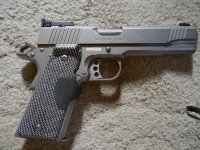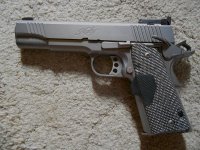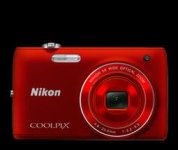Packard
Member
I am all for learning! I saw this picture in a member gallery:

To me, that picture looks like it might have been taken in a lightbox. The light seems to be very diffused.
Andrew
The first thing to look at is the shadow. It is directly under the subject and it is very soft-edged. So we know the main light source is from above. The soft edges tell us that the light source is "large", that is it is larger than the subject and probably diffused. This could have been taken in a tent with the light from above, or it could have been taken with a large soft box with the light from above. Sharply defined shadows indicate a "small" light source. I say small because the sun (which is quite large) is small when you look up at it. You can frequently obscure it with just your fist. So it is small relative to the subject. A small flash unit that is 6 feet from the subject is "small", but that same flash just a few inches from a small subject (like a watch) is "large".
The only specular highlights are on the brass disc. The texture on the grip is enhanced because the light is skimming over the surface. If it had been lit from the camera position the texture would have been killed.
There is not much internal contrast. A guess (just a guess) is that this was shot in a tent.
(I'm a lot better at analyzing people photos.)
Sometimes you will pick up a reflection on the surface that is a "tell" that indicates the shape of the light source. I don't see anything like that is this photo. So my guess is that it was shot in a tent.
Last edited:













